Cell engineering

Mikako Saito
Disease model cells of diabetes.Regenerative cell engineering. ES cells.Single-cell gene engineering. Femtoinjection.Food safety control and regulatory science.
Website

Tetsushi Mori
In our lab, we drive towards the exploitation and elucidation of the characteristics, role and molecular traits of novel/uncultivable environmental microorganisms using molecular biology based approaches.
Website
Biomolecular and structural informatics

Yutaka Kuroda
Structural and functional analysis of proteins at atomic/molecular level using recombinant DNA technologies, NMR, X-ray crystallography, and computational simulation. Biophysical studies of protein aggregation.
Website
Structure and cellular function of biomolecules

Yasumoto Nakazawa
i) Structural analysis of silk fibroins.
ii) Development of the medical implantation devices such as artificial cardiac valves and cardiovascular patches based on the silk fibroin.
Website
Molecular biology and pathophysiology

Masaki Inada
Michiko Hirata
Molecular pathological investigation using gene targeted mice and disease models on mice.
lnvestigations of refractory diseases for clinical drug development are employed for lifestyle-related diseases such as Cancer,Osteoporosis, Rheumatoid Arthritis and Periodonititis. Functional analysis of molecular biochemistry using mammalian cell to individuals are promoted research.
Website
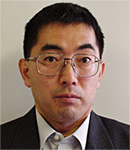
Yoshihiro Ohta
Development of novel techniques for organelle imaging and their application to mitochondrial study. Cell death, Ca2+ signaling and generation of reactive oxygen species are mainly focused.
Website
Plant biotechnology
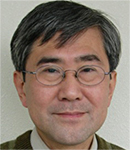
Yoshihiro Ozeki
Akiyo Yamada
Molecular biological and biochemical studies on the enzymes involved in plant secondary metabolisms. Molecular biological analysis of the genes based on the functin of the proteins related to salt-tolerance phenotype of the halophyte.
Website
Biobusiness and Molecular Biochemistry

Wakako Tsugawa
Biomolecular engineering for the development of 1) novel enzymes for the diagnostic application,and 2) novel proteins for the application in the synthetic biology. Development of novel biodevices for the creation of theranostic platforms and environmental monitoring systems.
Website

Ryutaro Asano
Artificial protein design based mainly on antibody
molecules and their detailed functional analyses for
development of next-generation biologicals and
biosensors.
Website
Nanobiotechnology
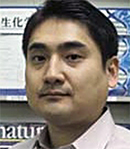
Kazunori Ikebukuro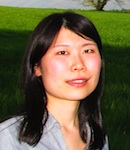
Kaori Tsukakoshi
I focus on the interaction between nucleic acids and proteins and apply it to develop biosensing system for new biomarkers or epigenetic modification. I am also engaged in the evolutionary molecular engineering research to improve function of nucleic acids and proteins to adjust those to those applications using computer.
Website

Ryuji Kawano
The goal of my research is to establish a system that uses biological nanopores for single-molecule detection. Channel membrane proteins have nanochannels around 1 nm in size. These biological nanopores are capable of detecting and electrically recognize even single molecules with a high signal-to-noise ratio. However, the channel size is limited by the inherent protein structure. I plan to develop artificial nanochannels such as synthetic nanopores or polypeptides combined with biomaterials (proteins and lipid bilayers) on the basis of MEMS technology for novel nanopore sensing.
Website
Biomolecular Engineering and Marine Biotechnology

Tsuyoshi Tanaka
Atsushi Arakaki
Tomoko Yoshino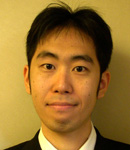
Yoshiaki Maeda
Production of biofuels, chemicals and pharmaceuticals on the basis of biological functions of various microorganisms. /Development of Bio-sensing system based on lab-on-a-chip technologies.
Molecular analysis of biomineralization mechanism. Biomimetic synthesis of organic/inorganic hybrid nanomaterials using biological molecules.
Development of novel bio-nanomaterials through genetic engineering by microorganisms for biosensing and biomedical applications.
Website
Bioelectronics and Marine Biotechnology
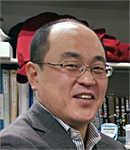
Nobuhumi Nakamura
Masaki Tanaka
Bioelectrochemistry and Raman spectroscopy of metalloproteins and construction of biofuel cells.
Website

Takahiro Ichikawa
Self-organization of liquid crystals provides well-ordered and highly-defined nanostructures, and therefore they have attracted increasing attention in the field of the development of next-generation soft materials.
Among various liquid-crystalline materials, we have focused on bicontinuous cubic liquid crystals with expecting their three-dimensionally continuous nanostructures. Bicontinuous cubic structures are composed of three-dimensionally interwoven nanochannel domains and a surrounding sheath domain. Owing to their continuous structures, their application for nanostructured materials are now strongly expected.
Website
Synthetic organic chemistry, Bioorganic chemistry/chemical biology
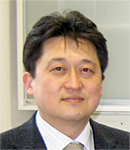
Kazuo Nagasawa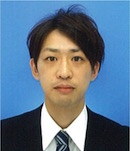
Minami Odagi
Total synthesis of biologically active natural products. Development of organocatalyst.
Website

Kaori Sakurai
Design and synthesis of functional small molecules controlling live cells and nucleic acids–protein interactions based on bioorthogonal reactions. Biological evaluation of the synthesized small molecules to apply to regenerative medicine and drug discovery.
Website

Kaori Sakurai
Development of novel chemical tools to study biological functions of glycolipids and natural products.
Website
Biosociety engineering, Biomolecules and proteomics
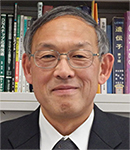
Masafumi Yohda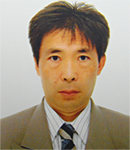
Keiichi Noguchi
Yosuke Fukutani
Structure and function of molecular chaperones. Genetic analysis systems for SNP genotyping and bioremediation. Structure and function of metalloenzymes. Protein X-ray crystallography.
Website
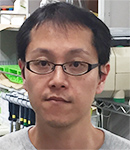
Kyosuke Shinohara
We examine role of cilia in our body. Cilia are
nanomachine motor devices that protrude from cell
surface and play important role on transport of fluid in
airway, brain, and oviduct. Using knockout mouse,
electron microscopy, and protein engineering, we address
molecular basis of motility and mechanical property of
cilia: How cilia move or how cilia acquire their
stiffness and integrity.
Systembiology
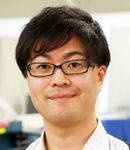
Hiroshi Tsugawa
Our laboratory performs the research of systems biology through the development of mass spectrometry omics techniques that illuminate the diversity of metabolites from plant, human, and the associated microbiome.
Website
Medicinal enzyme engineering
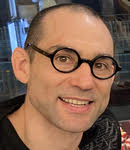
Christopher John Vavricka Jr.
Computationally-driven enzyme engineering enables the sustainable biosynthesis of virtually any desired chemical product. Therefore, we are developing computational approaches for the discovery and engineering of specialized enzymes that can extend metabolic pathways to produce valuable medicinal compounds.
Website
Theoretical linguistics

Yuji Hatakeyama
I study theoretical linguistics.
Website
Environmental Genome Technology (Collaborative Study Field)

Chikashi Nakamura
Hyonchol Kim
Cell engineering based on nanotechnology aiming to use iPS cells or somatic stem cells practically for the regenerative medicine. Genome engineering based on high-throughput genome analysis aiming to make fine products from the gene resources of Aspergillus oryzae used for Japanese traditional fermentation industries or the related species. Website
